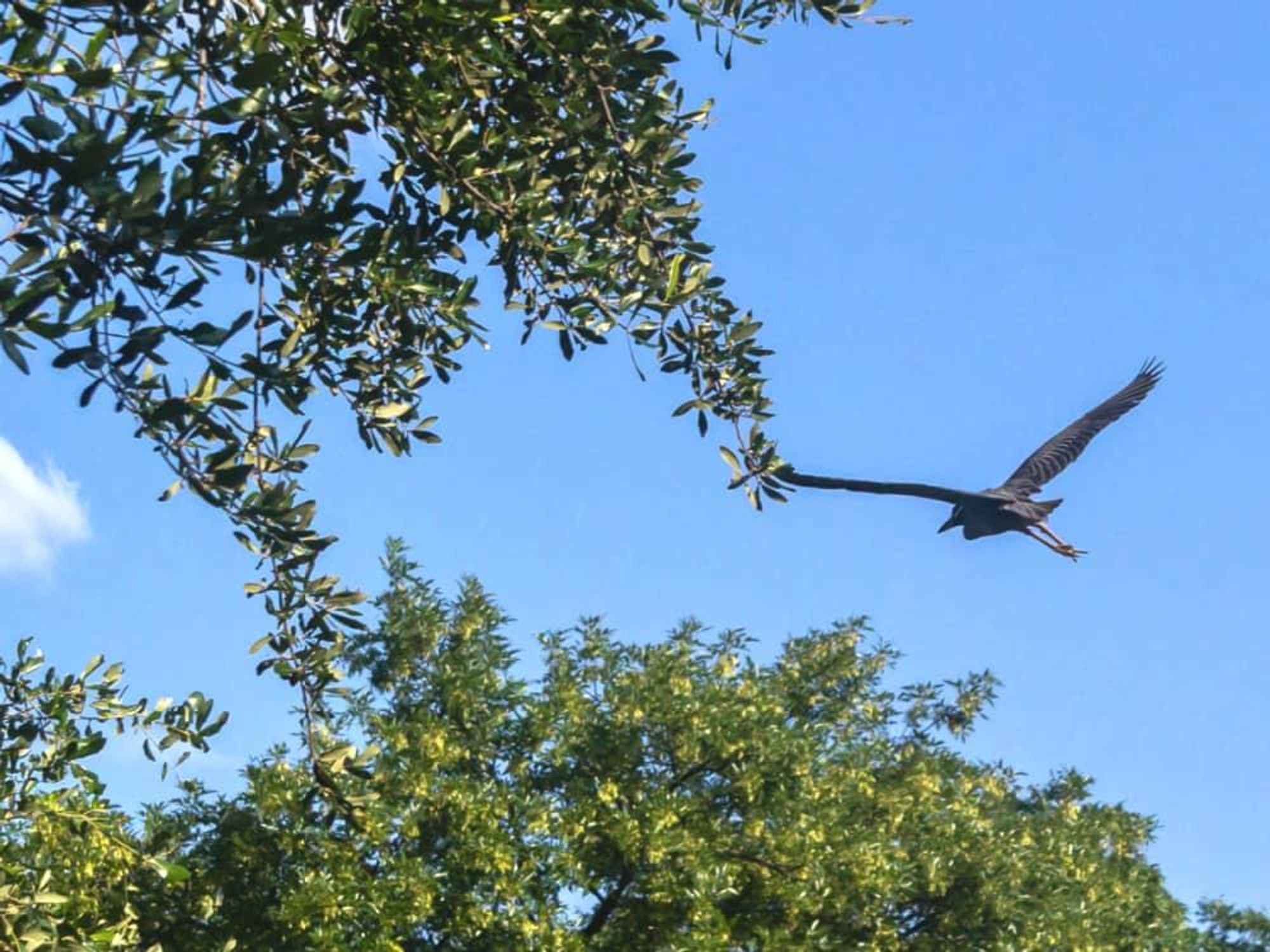Bird News
Herons camped out in Dallas neighborhood prepare to leave the nest

Editor's note: This is the final installment in a series about yellow-crowned night herons by Marc Lee, a resident of the Casa View neighborhood of Dallas.
Yellow-crowned night herons like the family that nested in my yard this spring are common across the southeastern United States, yet the species hasn't been extensively studied.
Compiling detailed information on the birds and their habits can be difficult. Their camouflage coloring and practice of building nests high in the treetops make them hard to observe.
There are many things scientists and bird watchers don't know.
For example, nobody knows how long the herons live. The best guess from experts is six to 15 years; but because the birds live in human environments, they may not reach the end of their natural lifespan. They get killed by human activities, cars, dogs, and are occasionally hunted.
Ornithologists think the night herons find mates either during spring migration or once they reach their breeding grounds. Nobody knows where or how they hook up.
Scientists think that mating birds stick together — but maybe not 100 percent. "They are assumed to be monogamous with a few exceptions of extra-pair infidelity," says Nick Kanakis, a wildlife photographer and educator at the Trinity River Audubon Center.
Amateur birders are perhaps the best unofficial resource for us to learn more about the patterns of these herons. The piles of dead crayfish and poo are a sure indicator that there is a nest above.
An easier place to find similar birds is at the UT Southwestern Medical Center rookery in the Dallas Medical District.
The rookery has been in existence since at least 1963. It has about six acres of land dedicated as a bird sanctuary for migrating and mating waterfowl near the intersection of Inwood Road and Harry Hines Boulevard.
Tucked among a parking garage, university tennis courts, and Parkland Hospital, a rustic path traces the edge of a dense grove of native oaks, hackberries cedars, and even mesquite.
At the height of breeding season in mid- to late-June, the rookery is full of hundreds of herons, egrets ibises, and their chicks.
There are at least eight types of birds here, and they are everywhere — wandering on the ground, nesting in the trees, flying overhead. Their chattering and squawking overwhelm the traffic noise from Harry Hines and nearby I-35, as they call to each other, fight, and feed their chicks.
On my visit, I see several kinds of snowy white egrets, stocky black-crowned night herons, and a few bi-colored anhingas. I scan the treetops for the elusive yellow-crowned night heron, but there are none to be seen. They are more solitary than the communal birds here.
If you plan a visit to the sanctuary, be prepared to see dead chicks of all kinds. I see one on the ground, a black-crowned night heron that seems to have been pecked to death. It's just nature.
The herons at my house have pretty much left the nest. The two youngsters born in my yard are full size and independent. I see them occasionally in neighbors' trees, rooftops, or wandering fearlessly in the street, flying away at the last minute when a car approaches.
My neighbor, who has had nesting herons in her yard since 2012, tells me the cycle is about to end: They'll be gone by early July.
I look forward to the day next March when the adults return and start another family.
